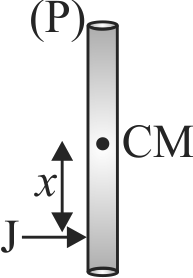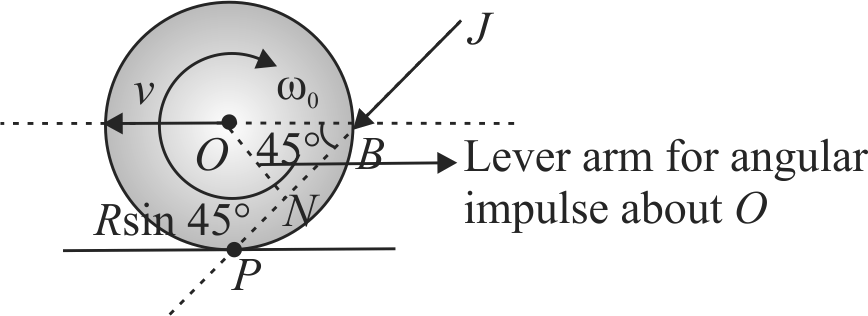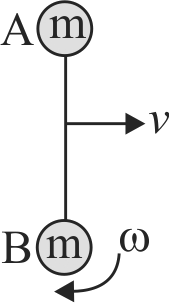365626
\(A B\) is a horizontal diameter of a ball of mass \(m=0.4 {~kg}\) and radius \(R=0.10 {~m}\). At time \(t=0\), a sharp impulse is applied at \(B\) at angle of \(45^{\circ}\) with the horizontal, as shown in figure so that the ball immediately starts to move with velocity \({V_0} = 10\;m{s^{ - 1}}\). Calculate the angular velocity of ball just after impulse provided.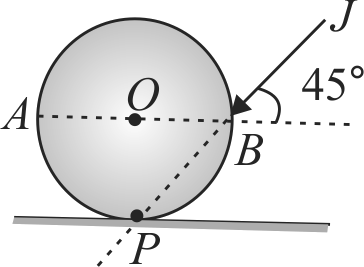
365627
Two particles of equal mass \(m\) at \(A\) and \(B\) are connected by a rigid light rod \(AB\) lying on a smooth horizontal table. An impulse \(J\) is applied at \(A\) in the plane of the table and perpendicular to \(A B\). The velocity of particle at \(A\) is: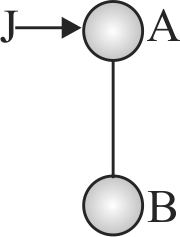
365626
\(A B\) is a horizontal diameter of a ball of mass \(m=0.4 {~kg}\) and radius \(R=0.10 {~m}\). At time \(t=0\), a sharp impulse is applied at \(B\) at angle of \(45^{\circ}\) with the horizontal, as shown in figure so that the ball immediately starts to move with velocity \({V_0} = 10\;m{s^{ - 1}}\). Calculate the angular velocity of ball just after impulse provided.
365627
Two particles of equal mass \(m\) at \(A\) and \(B\) are connected by a rigid light rod \(AB\) lying on a smooth horizontal table. An impulse \(J\) is applied at \(A\) in the plane of the table and perpendicular to \(A B\). The velocity of particle at \(A\) is:
365626
\(A B\) is a horizontal diameter of a ball of mass \(m=0.4 {~kg}\) and radius \(R=0.10 {~m}\). At time \(t=0\), a sharp impulse is applied at \(B\) at angle of \(45^{\circ}\) with the horizontal, as shown in figure so that the ball immediately starts to move with velocity \({V_0} = 10\;m{s^{ - 1}}\). Calculate the angular velocity of ball just after impulse provided.
365627
Two particles of equal mass \(m\) at \(A\) and \(B\) are connected by a rigid light rod \(AB\) lying on a smooth horizontal table. An impulse \(J\) is applied at \(A\) in the plane of the table and perpendicular to \(A B\). The velocity of particle at \(A\) is:

